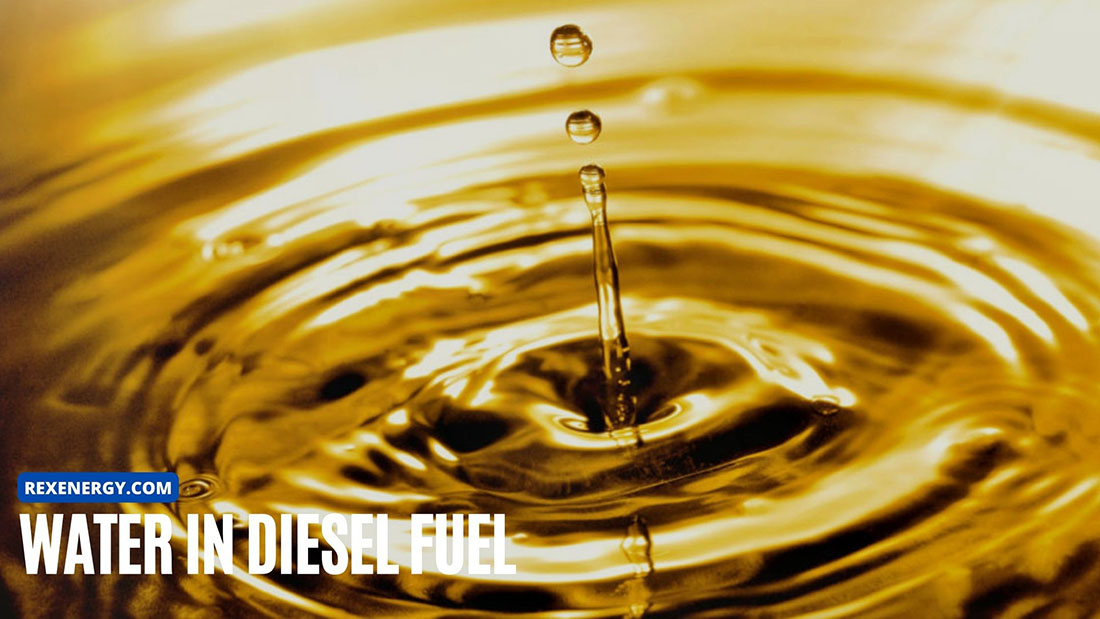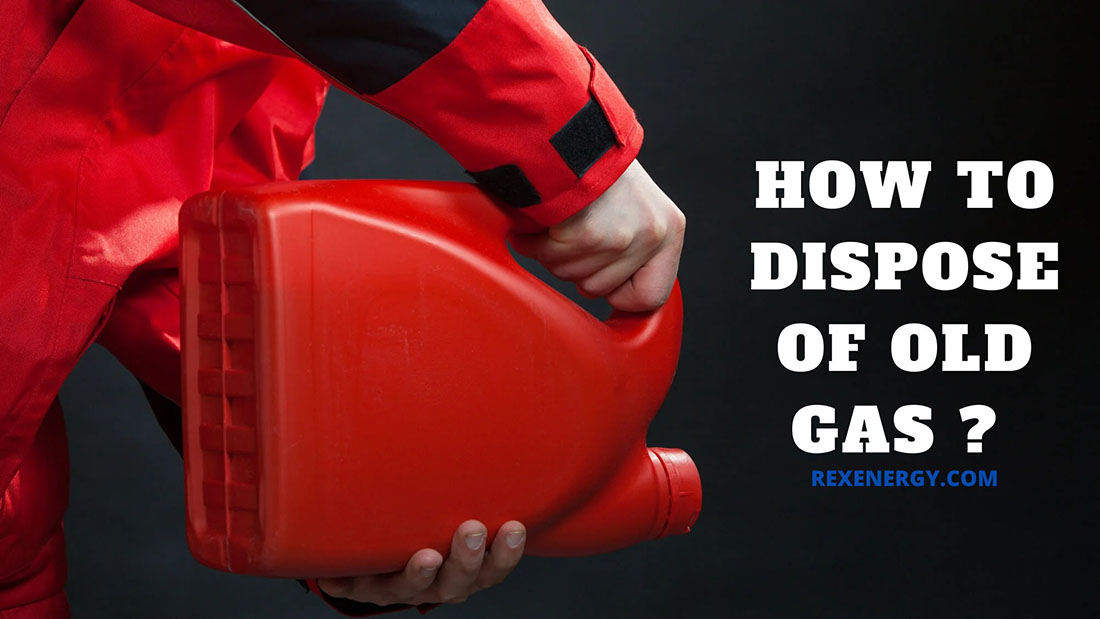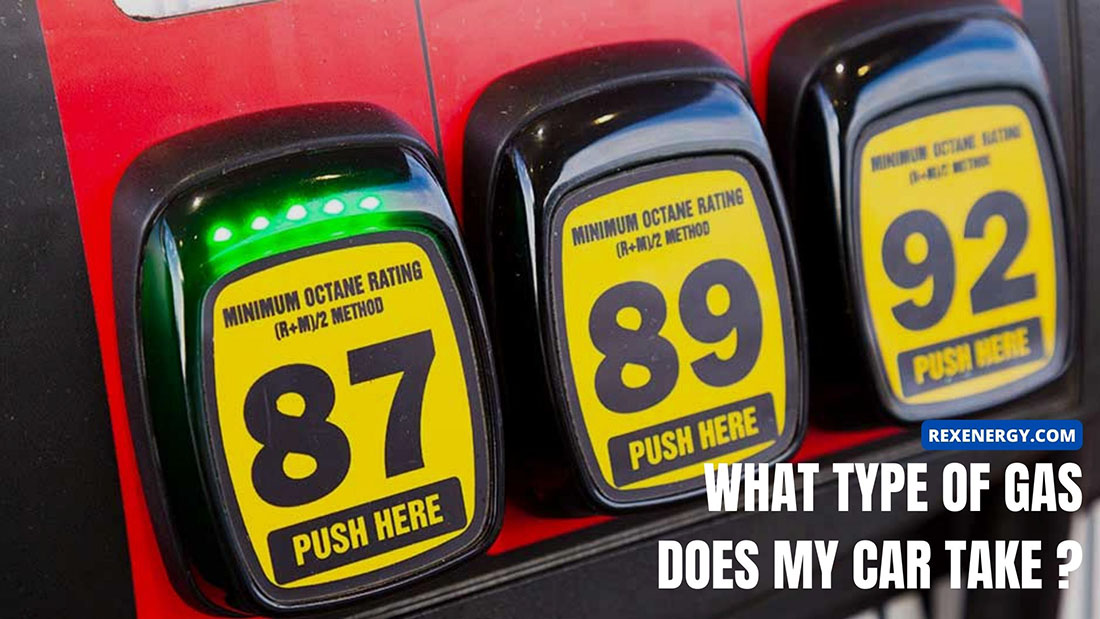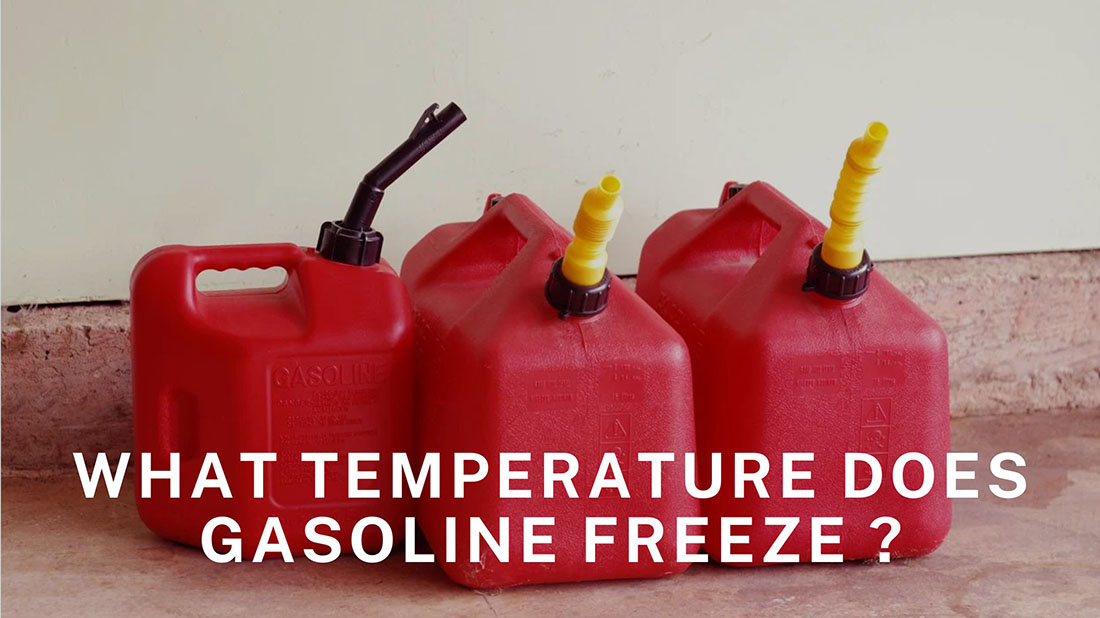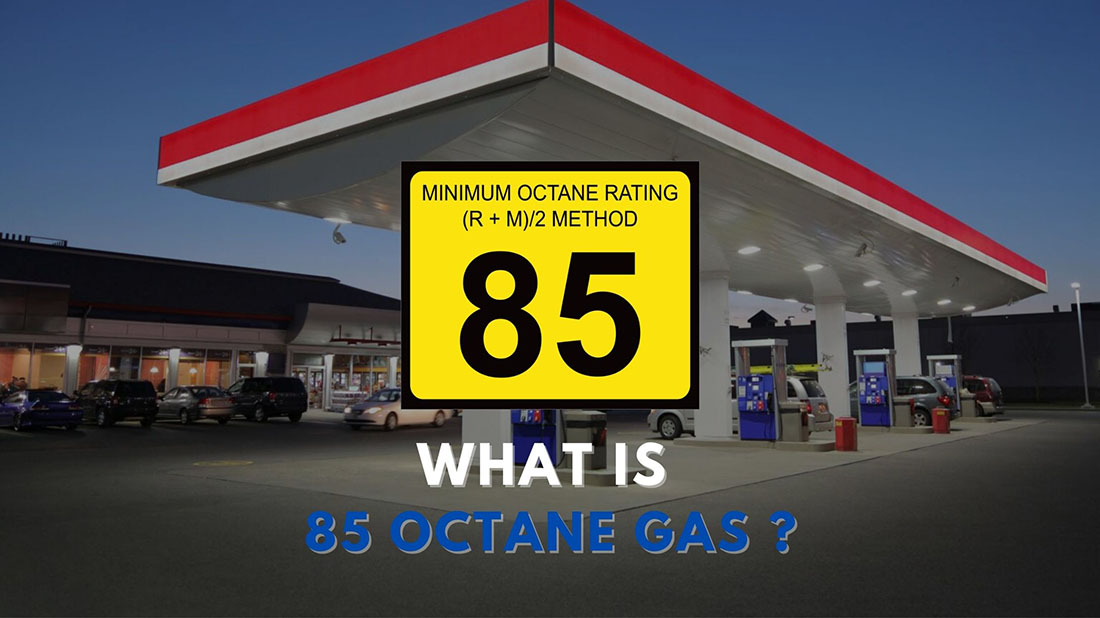Despite being recognized for its impressive energy density, diesel fuel does not always work well in engines, especially when being watered down. Whether water is also considered a contaminant for diesel is what many have been wondering.
This article will discuss what might happen when you allow water in diesel fuel filters. Scroll to learn more
7 Reasons To Not Allow Water In Fuel
Water does not react well with fuel. All possible products from their chemical reactions, such as soft solids, ice crystals, hydrogen, or oxide particles, will wear down the injectors and eat up the metal surfaces. Moisture at the tank’s bottom is also where thousands of bacteria thrive and spread.
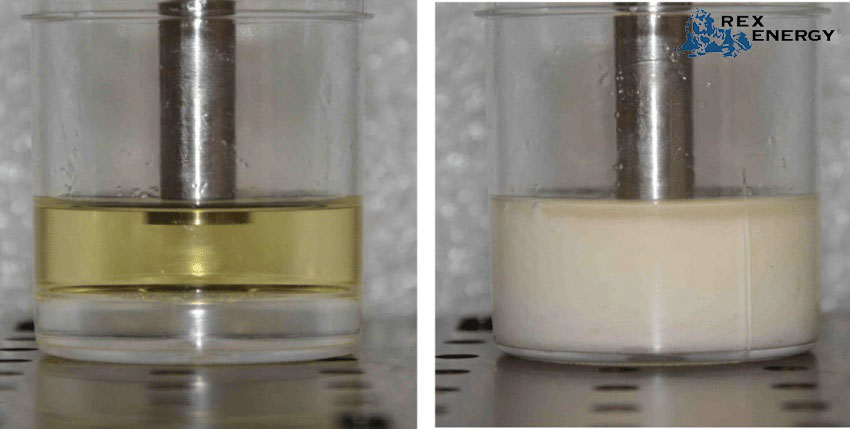
Rust Particles
Water in the diesel system forms loose iron oxide particles on the iron and steel components, causing them to rust. Worse, they will clog the filters quickly to invade the injectors, ruining their injection spray pattern and potentially marring surrounding parts.
Corrosion
When fuel acids come into contact with water, they will corrode all the ferrous metals (and even the non-ferrous ones in more serious cases).
And once these metal surfaces wear down, they expose fresh, new metal areas that are even twice as vulnerable to damage. Ignoring the problem for too long will wreck your fuel injectors beyond saving.
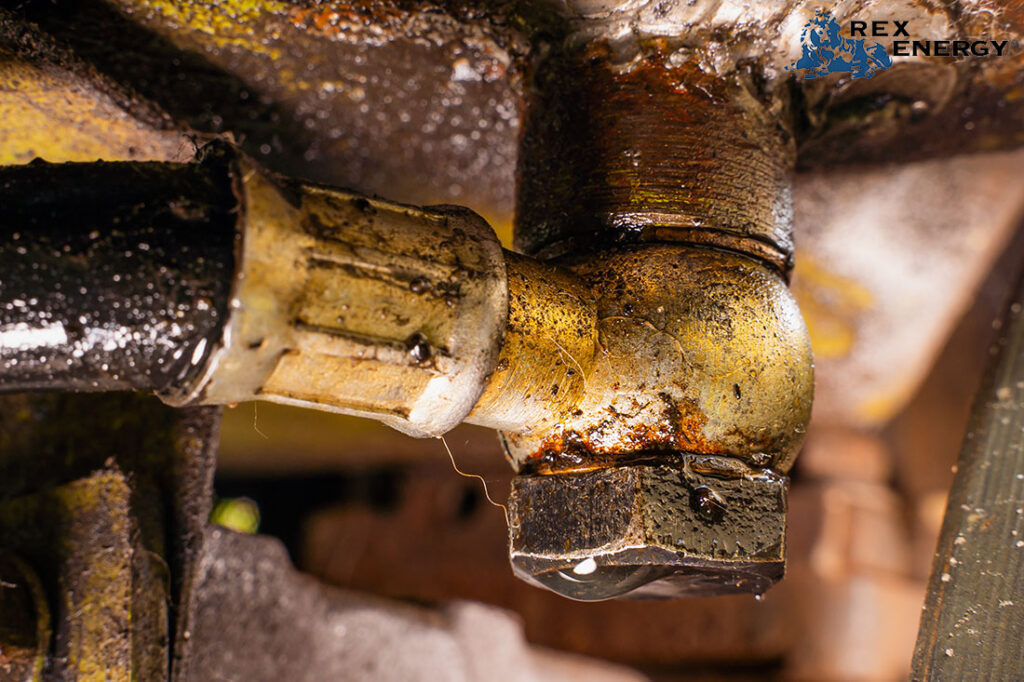
Bacteria
Water does not float on diesel but sinks due to its heavier weight. It pools at the tank’s bottom, where thousands of soil bacteria hide.
Regardless of where water enters the tank, it will expand even further by feeding on moisture and diesel, resulting in a thick slime layer that soon clogs up the entire filter. The bacterial waste products also speed up the corroding, staining the upstream surfaces with dark layers of damp, dirty gel.
Reduced Lubrication
Diesel is known for its lubrication properties, which will weaken dramatically once infiltrated by water. The lack of lubrication leads to premature wear, galling, damaged tips, and severe corrosion in other delicate system components.
Cavitation and Pitting
The presence of water on overheating metal causes serious surface erosion and deterioration that is likely irreparable if detected too late. Furthermore, under excessive pressure, vapor bubbles might contract and condense into a thick liquid, wearing down the filters and injectors.
Sometimes, water accumulates on the metal surfaces in microscopic cracks, decomposing to generate hydrogen in mini-explosions. The cracks grow even larger afterward, creating severe wear particles.
Ice
In colder temperatures or winter, the water freezes into ice crystals that are just as deadly as the rust particles we discussed earlier.
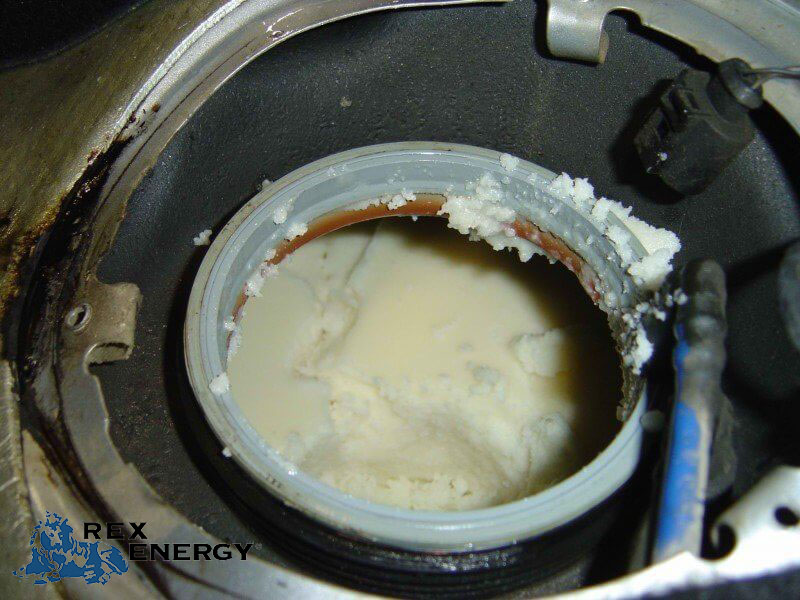
They wear down the metal surfaces and block the filters, dampening the engine’s operation and overall mileage. Worse, diagnosing the damage is not as easy as it sounds since the ice usually melts and disappears long before you notice the damage.
Soft Solids
Water and some additive chemicals in the fuel might attract each other since both are polar.
As a result of the reaction, the chemical molecules separate from the additive’s hydrocarbon chain to merge with the water molecules and form soft solids. Like ice crystals and dirt, the solids will fill up the filters, create thick layers of engine deposits, and wear down other metal compartments much faster than you think.
How to Know If There Is Water in Diesel?
Power/RPM Loss
Serious water contamination often reduces the engine’s RPM. As a result, your car will struggle to generate high torque for demanding tasks like climbing hills, carrying heavy loads, or accelerating mid-way. Under excessive stress, the engine might even overheat.
Erratic Idling or Rough Startling
No vehicles can maintain a regular, consistent speed when running on contaminated diesel.
So, instead of the usual steady and smooth idle, your car will shake, sputter, or vibrate aggressively. Jerky starts, intermittent stalls and long cranking times also indicate serious issues with the diesel.
Lagging Responses
Water in the fuel disrupts the engine’s combustion process. Therefore, the diesel engine will hesitate, stumble, and jerk whenever you engage the throttle instead of responding accurately to your input.
Clogged injectors and fuel pressure issues caused by the weak fuel-air mixtures only make it worse, resulting in serious misfires in some engine cylinders.
Exhaust and Smoke
Pay attention to the exhaust gas as well. As the water heats up in the fuel due to excessive combustion pressure, its vapor will mix with exhaust gasses to create white, misty smoke far from the usual black/dark gray emissions you often see in most diesel vehicles.
Slime Layers
As discussed above, bacteria form thick slime layers (commonly known as “diesel algae”) as they multiply. These layers clog the fuel lines and filters, stain the upstream surfaces, and produce extra acid byproducts that further speed up the damage inside the tank.
The Fuel’s Appearance
Diesel in good condition usually looks bright and clear. Once water finds its way into the fuel, you will notice several changes:
- Free water: As discussed, free water sinks to the bottom and becomes a growing environment for bacteria and diesel bugs.
- Suspended water: Its molecules mix with the fuel, making the diesel look much cloudier.
- Emulsified water: Due to significant pressure fluctuations, the water becomes 100% emulsified; the water and fuel molecules are hardly separated now. As a result, the fuel changes from cloudy to milky.
How to Remove It? The Best Treatment
First, let the water settle completely onto the tank’s bottom without being shaken. After a while, use a fuel-water separator to drain it off. We suggest buying a pump with an extended hose to reach further to the bottom.
- Add some commercial biocide into the tank if there is any microbial growth.
- Use extra fuel additives if needed. Cases in point are demulsifiers, which separate the water off the fuel and let it sink to the bottom so you can pump it out later. Another example is emulsifiers, which combine fuel with water completely to remove free droplets and prevent corrosion.
- Some use alcohol to remove water from diesel fuel. Contrary to popular belief, alcohol only joins the fuel and water to form deeper layers of the mixture. But the good news is that they are great at killing bacteria and bugs.
And do you have large diesel fuel tanks that might take hours to handle? Then, seek help from professionals or companies that offer maintenance services for diesel fuel.
How to Prevent
- Always use quality, sealed containers or storage tanks for your diesel.
- Inspect the tanks regularly for signals of leaks, broken seals, corrosion, and damage.
- Consider using stabilizers or fuel additives to minimize water absorption from the air.
- For long-term storage, keep the tanks full; the reduced air space helps you prevent water condensation and accumulation.
Conclusion
Water in diesel causes numerous engine problems and puts you at severe risk of accidents on long trips, so addressing the issue immediately is a must.
And once the problem has been properly handled, make it a habit to inspect your diesel on a regular basis. Do not forget to use extra stabilizers and additives in the fuel to avoid excessive water absorption.

